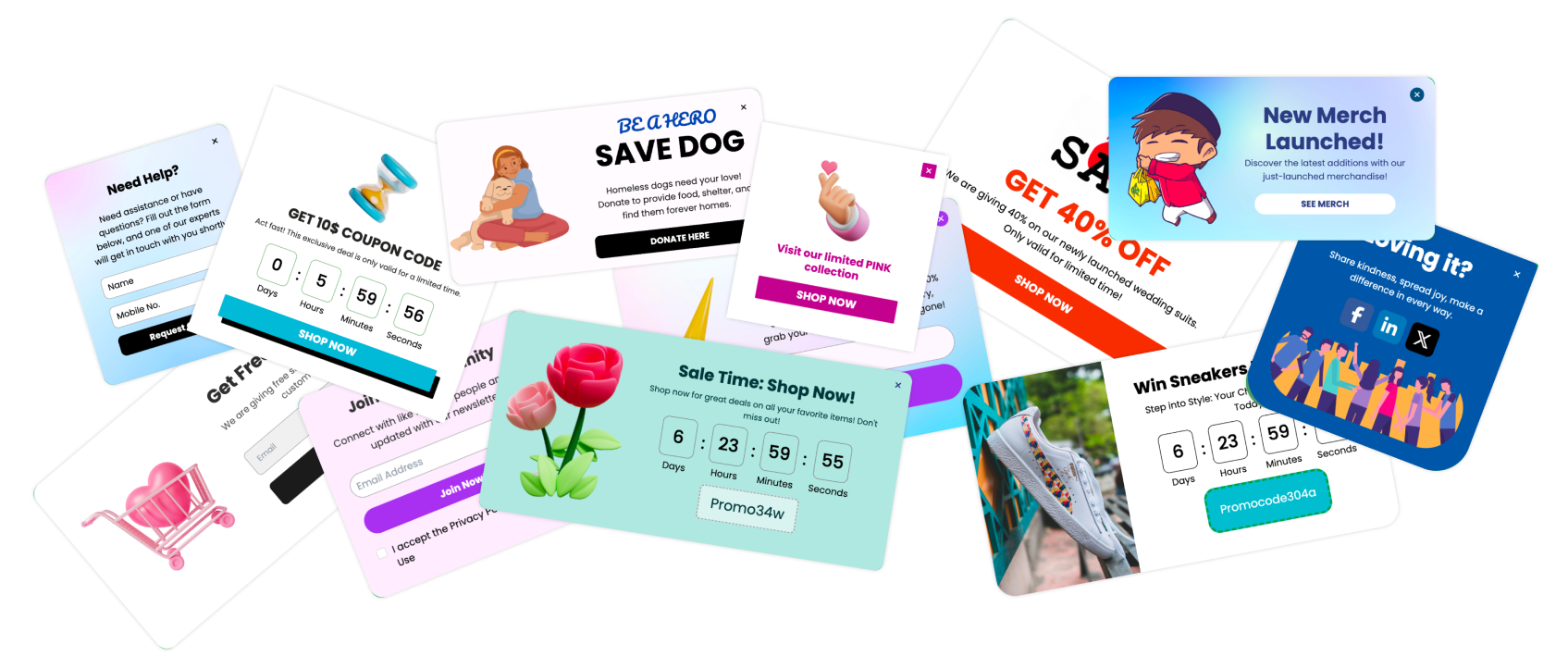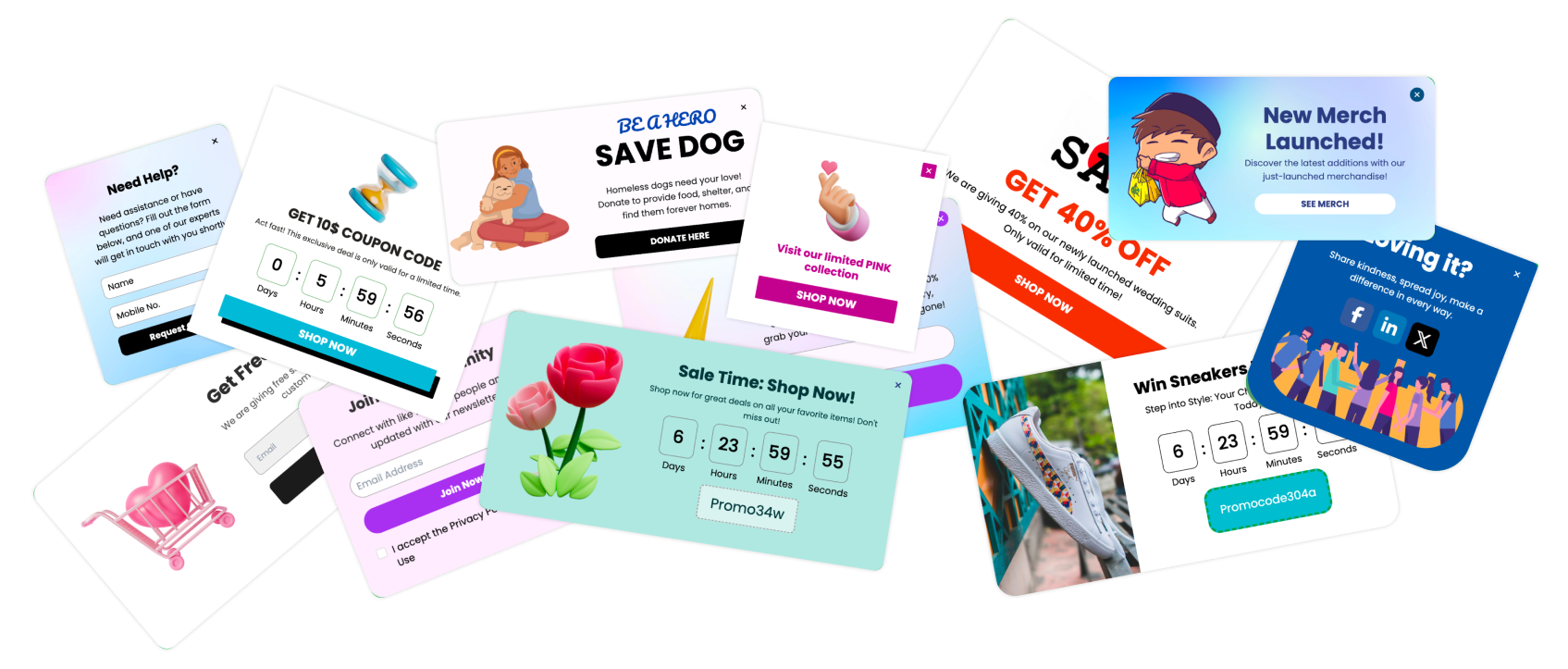Want to share a video stored in your Dropbox account directly on your website? Embedding Dropbox videos allows your visitors to watch content without leaving your page, enhancing user engagement and providing a seamless viewing experience. While Dropbox is excellent for file storage and sharing, directly embedding videos for smooth playback on a website requires a few specific steps.
This comprehensive guide will walk you through various methods to embed Dropbox videos, from using modified share links and HTML iframes to leveraging tools like Poper for more advanced control and presentation.
Why Embed Dropbox Videos on Your Website?
Keep Visitors On-Site: Users can watch your video without being redirected to Dropbox.
Control Over Presentation: Embedding gives you more say in how the video appears.
Convenience: If your videos are already in Dropbox, it saves uploading them elsewhere.
Share Prototypes or Demos: Easily share video content for feedback or demonstration.
Understanding Dropbox Video Sharing & Embedding Options
Dropbox primarily offers "share links" for files. For true website embedding, these links often need modification, or you'll need to use HTML.
Standard Dropbox Share Link (e.g., ?dl=0):
- What it is: The default link you get when you "Copy link" in Dropbox.
- Behavior: Typically opens a Dropbox preview page where users can view or download the file. It's not a direct video embed.
- Limitation for Embedding: Pasting this directly into an <iframe> usually shows the Dropbox interface, not just the video.
What it is: The default link you get when you "Copy link" in Dropbox.
Behavior: Typically opens a Dropbox preview page where users can view or download the file. It's not a direct video embed.
Limitation for Embedding: Pasting this directly into an <iframe> usually shows the Dropbox interface, not just the video.
Modified Dropbox Share Link (e.g., ?raw=1):
- What it is: By changing dl=0 (or dl=1 for direct download) to raw=1 at the end of the share link, you tell Dropbox to serve the raw file content.
- Behavior: For videos, this link, when used correctly (e.g., in an <iframe> or a video player), can allow direct playback.
- Key for Direct Embedding: This is the most common "hack" for embedding Dropbox videos.
What it is: By changing dl=0 (or dl=1 for direct download) to raw=1 at the end of the share link, you tell Dropbox to serve the raw file content.
Behavior: For videos, this link, when used correctly (e.g., in an <iframe> or a video player), can allow direct playback.
Key for Direct Embedding: This is the most common "hack" for embedding Dropbox videos.
Using an HTML <iframe> or <video> Tag:
- What it is: Standard HTML elements used to embed external content or play videos directly.
- How it works with Dropbox: You use the modified raw=1 link as the source for these tags.
What it is: Standard HTML elements used to embed external content or play videos directly.
How it works with Dropbox: You use the modified raw=1 link as the source for these tags.
Third-Party Tools (like Poper):
- What it is: Platforms that help you create embeds, popups, or other website elements, often with more design control and targeting options.
- How it works with Dropbox: You can use these tools to create an HTML embed (often an <iframe>) that sources the Dropbox video, and then manage its display and behavior through the tool.
What it is: Platforms that help you create embeds, popups, or other website elements, often with more design control and targeting options.
How it works with Dropbox: You can use these tools to create an HTML embed (often an <iframe>) that sources the Dropbox video, and then manage its display and behavior through the tool.
Step 1: Sign Up for Your Poper Account
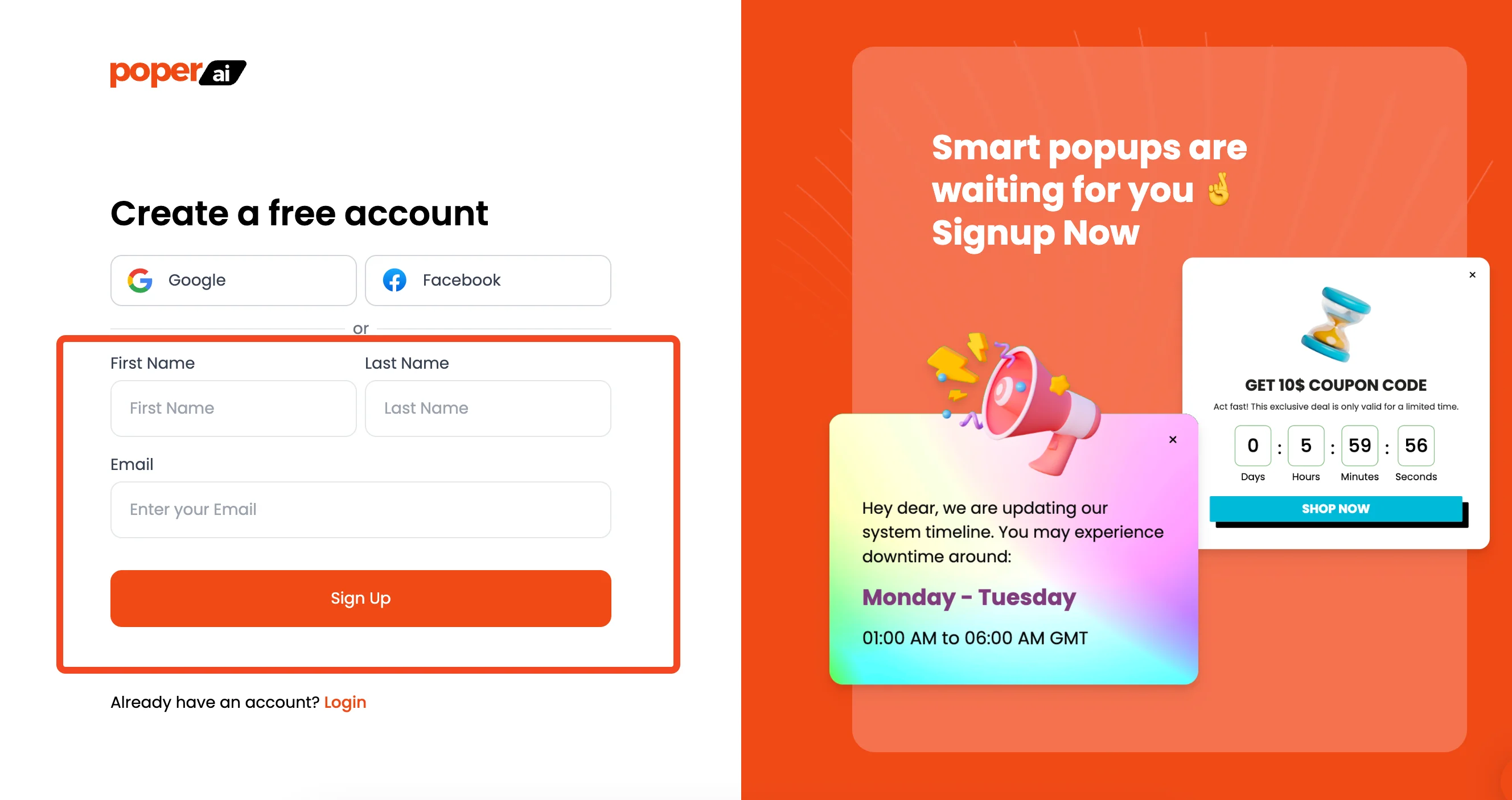
If you haven't already, your first move is to create an account with Poper. This is your gateway to building all sorts of engaging elements for your website, including the embed we're about to create.
Signing up gives you access to the tools you need.
Step 2: Add Your Domain and Start a New Campaign
Once you're in Poper, you'll want to add your website's domain. This tells Poper where your embeds will live.
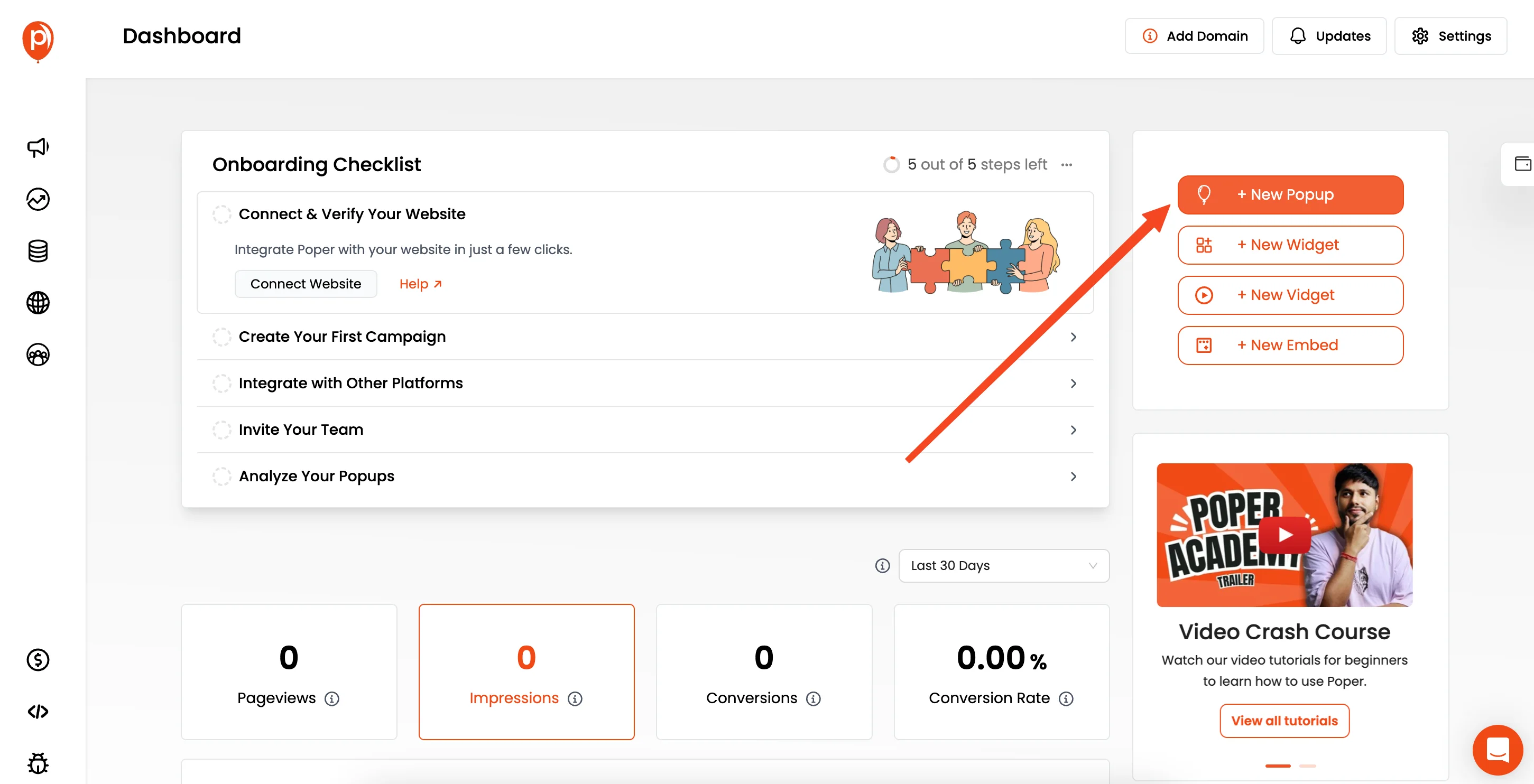
After that, we’ll begin by creating a new campaign. Think of a campaign as the container for your embed. Look for an option like "Create New" or "New Popup."
Step 3: Choose to Start from Scratch
For this video embed, we'll build it from the ground up to give you full control. So, when prompted to choose a template or starting point, select the "Start from Scratch" option.
This gives us a blank canvas in the Poper editor, perfect for our custom HTML.
Step 4: Get and Prepare Your Dropbox Video Link
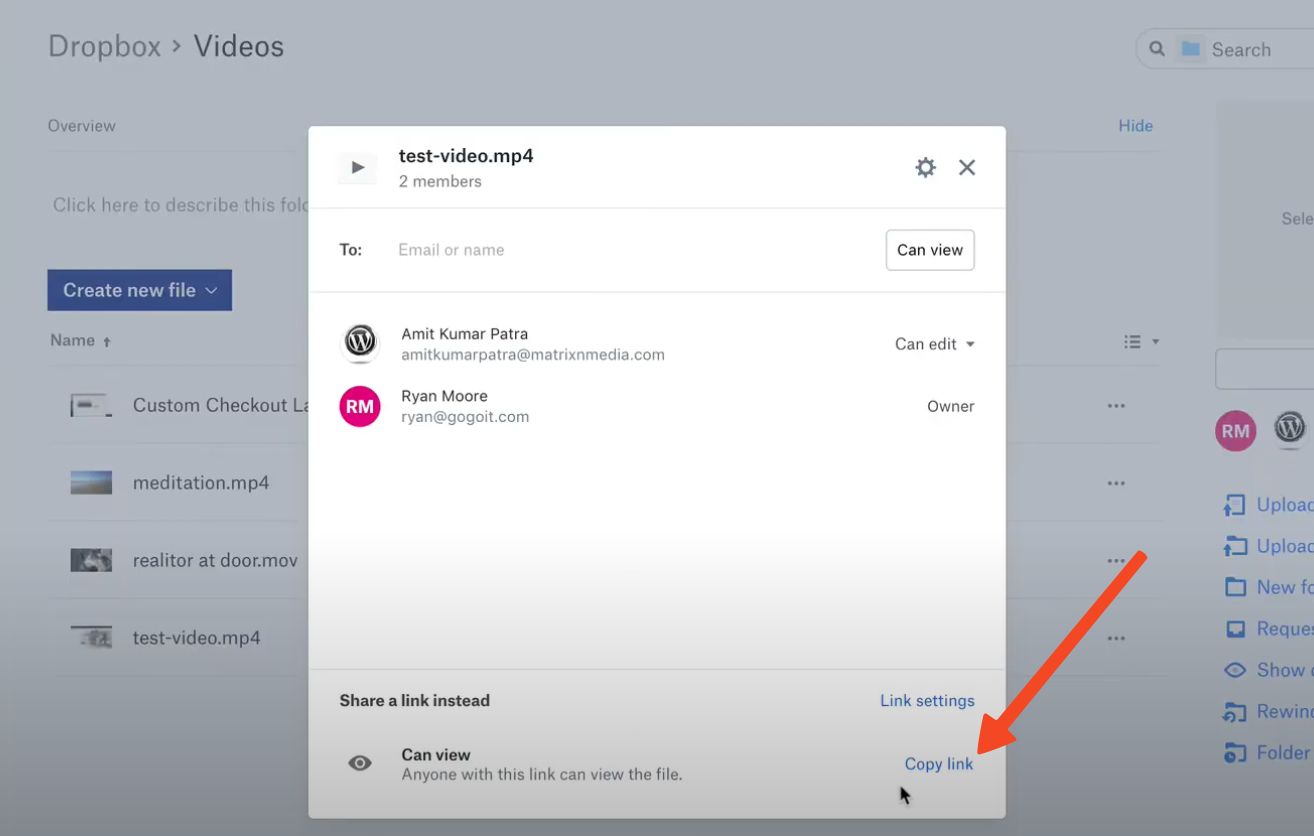
Now, open a new tab in your browser and head over to Dropbox. Find the video file you want to embed. When you hover over the video, an option to "Copy link" should appear. Click that.

Next, paste this copied link into a simple text editor (like Notepad or TextEdit). The link might look something like https://www.dropbox.com/s/yourvideoid/yourvideo.mp4?dl=0. We need to tweak this: change the dl=0 at the end to raw=1.
So, your link becomes https://www.dropbox.com/s/yourvideoid/yourvideo.mp4?raw=1. This little change is key for direct embedding.
Step 5: Generate the iFrame Code Using Poper's Tool
With your modified Dropbox link ready, it's time to create the actual embed code. Poper has a handy "iFrame Generator Tool" for this.
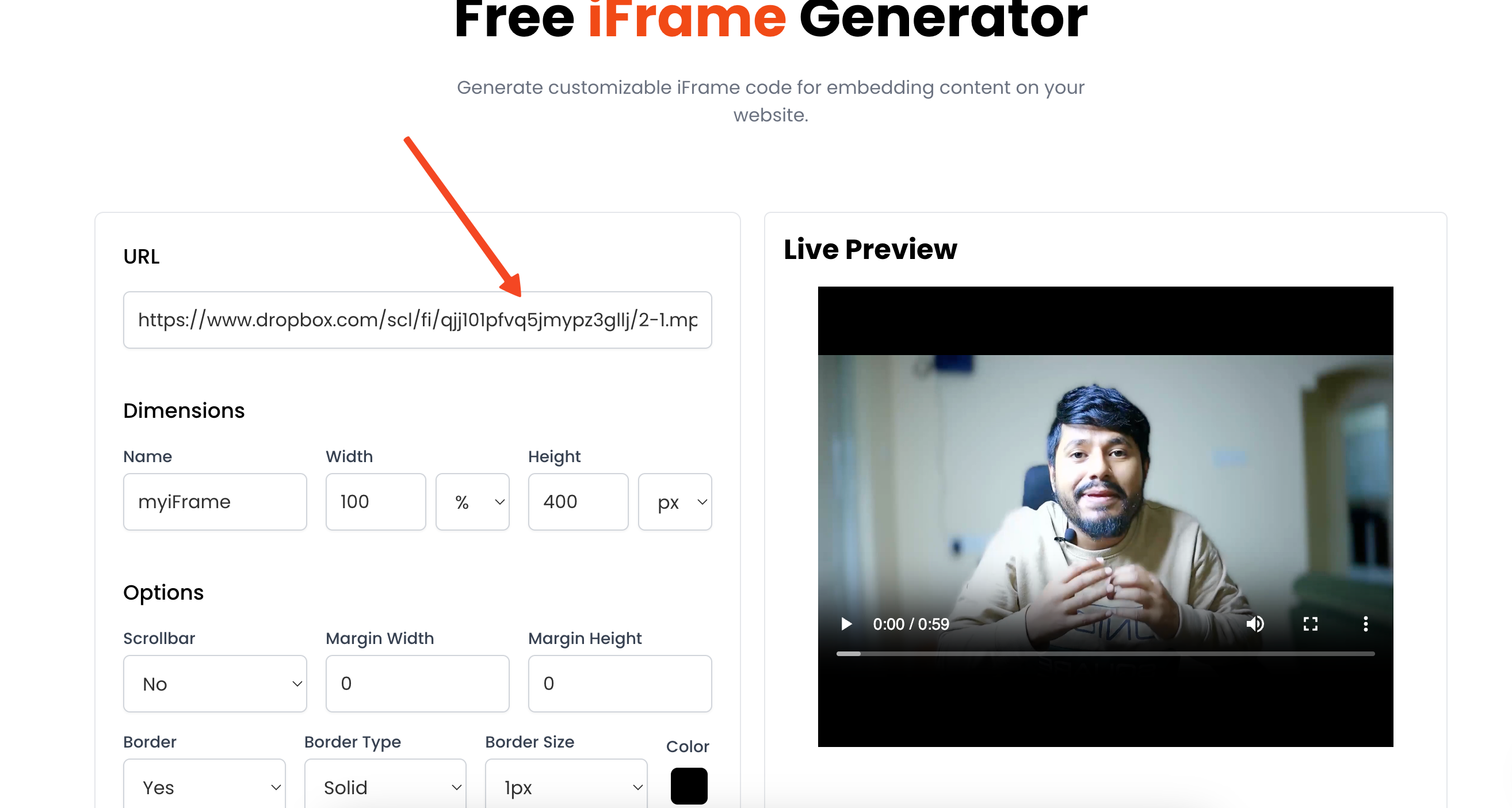
Navigate to this tool within Poper, paste your raw=1 Dropbox link into it, and let the tool generate the iFrame HTML code. Copy this generated code – we’ll need it in the Poper editor.
Adding the Video to Your Poper Embed
With the iFrame code in hand, let's pop it into your Poper design.
Step 6: Add an HTML Element to Your Design
Back in the Poper editor where you started your scratch campaign, look for an option to add elements.
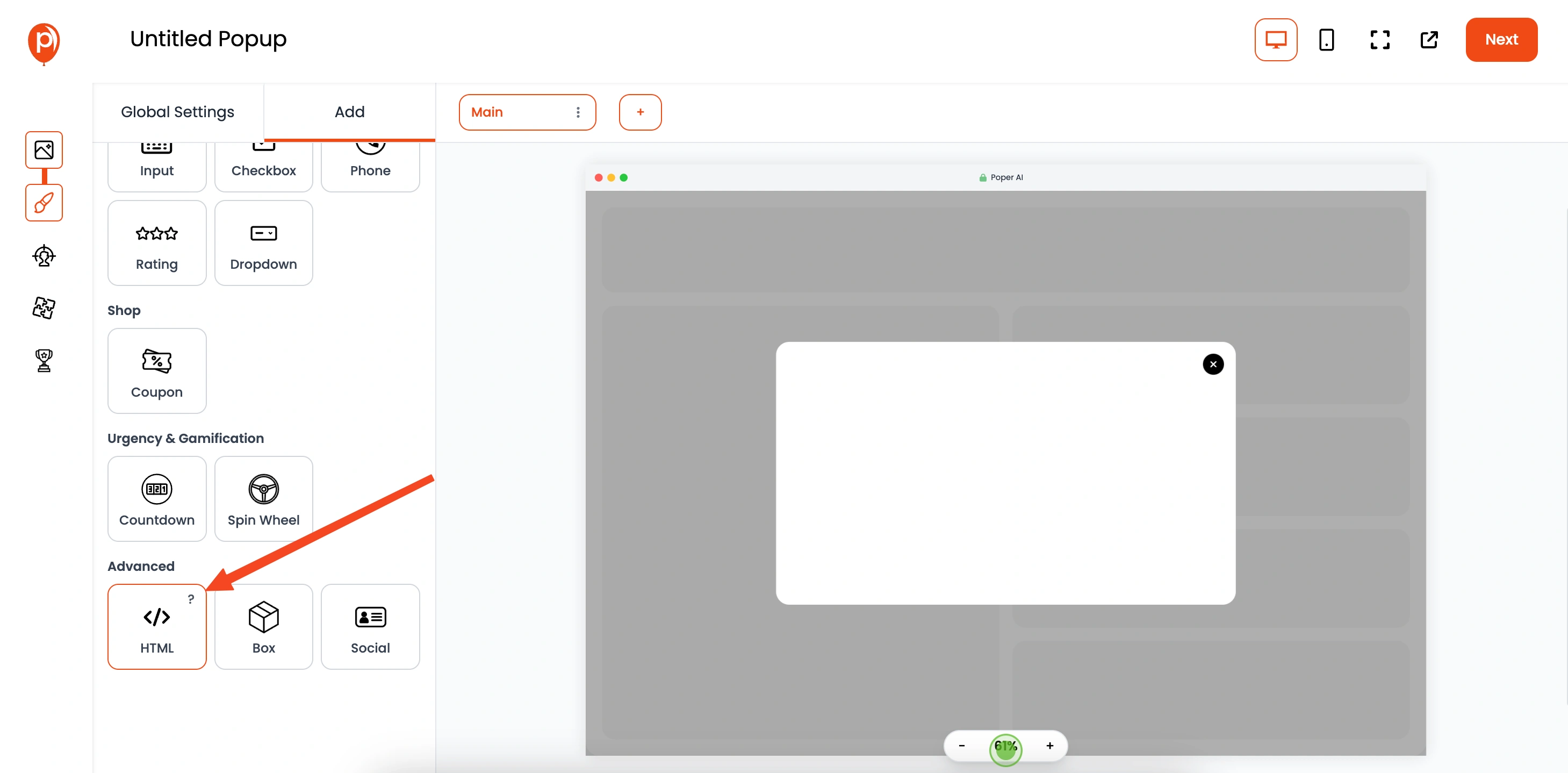
You'll want to find and click on the "HTML" element. This allows you to insert custom code, which is exactly what we need for our Dropbox video iFrame.
Step 7: Paste Your iFrame Code
Once you've added the HTML element to your canvas, there will be a space, often in a sidebar on the left, where you can paste code.
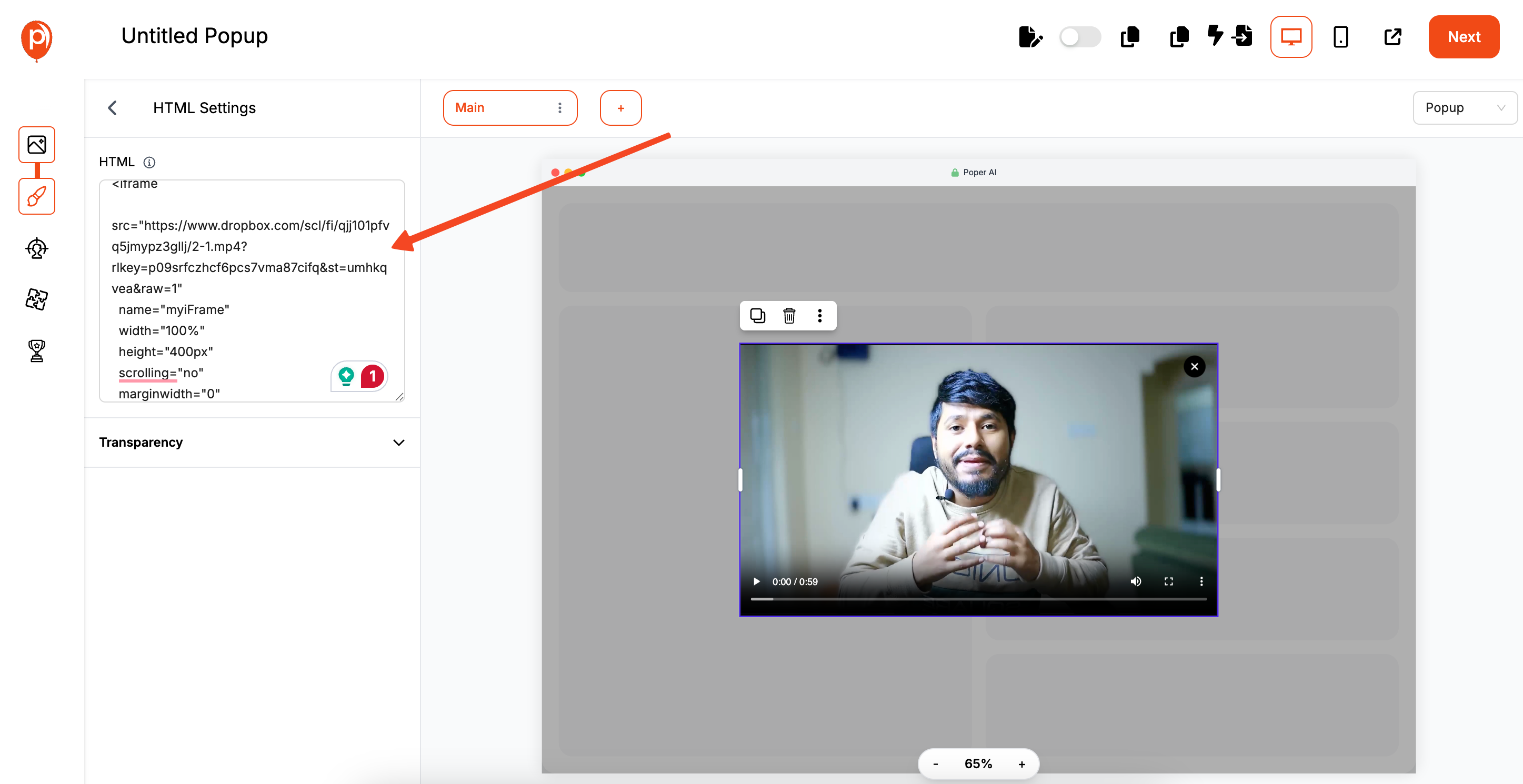
Go ahead and paste the iFrame code you copied from Poper's iFrame Generator Tool into this HTML input area. You should see a preview of your video appear in the editor.
Step 8: Adjust the Video Size for a Responsive Fit
The default iFrame code might have fixed dimensions like width="400px" and height="300px". To make your video look good on all screen sizes, I recommend changing the width attribute in the HTML code to width="100%". You can also remove the height attribute entirely; this often helps the video adjust its height automatically based on the width, maintaining the aspect ratio. This makes your video responsive.
Step 9: Position Your Video Within the Embed
You can now drag and place the HTML element containing your Dropbox video. Position it where you want it within your Poper embed – perhaps centered, or aligned to one side. Our editor is designed to be intuitive, so you can easily arrange elements.
Step 10: Refine the Look with Overflow Settings (Optional)
If you're aiming for a sleeker look, like rounded corners on your video embed, here’s a tip. In Poper's "Global Settings" (or it might be under "Style Settings" for the embed itself), look for "Dimensions" or a similar section, and then find "Overflow."
Setting overflow to "hidden" can help if you’ve styled the container with rounded corners, ensuring the video doesn’t poke out.
Finalizing and Publishing Your Embed Dropbox Video
Almost there! Just a few more steps to get your video live.
Step 11: Set Up Your Display Conditions
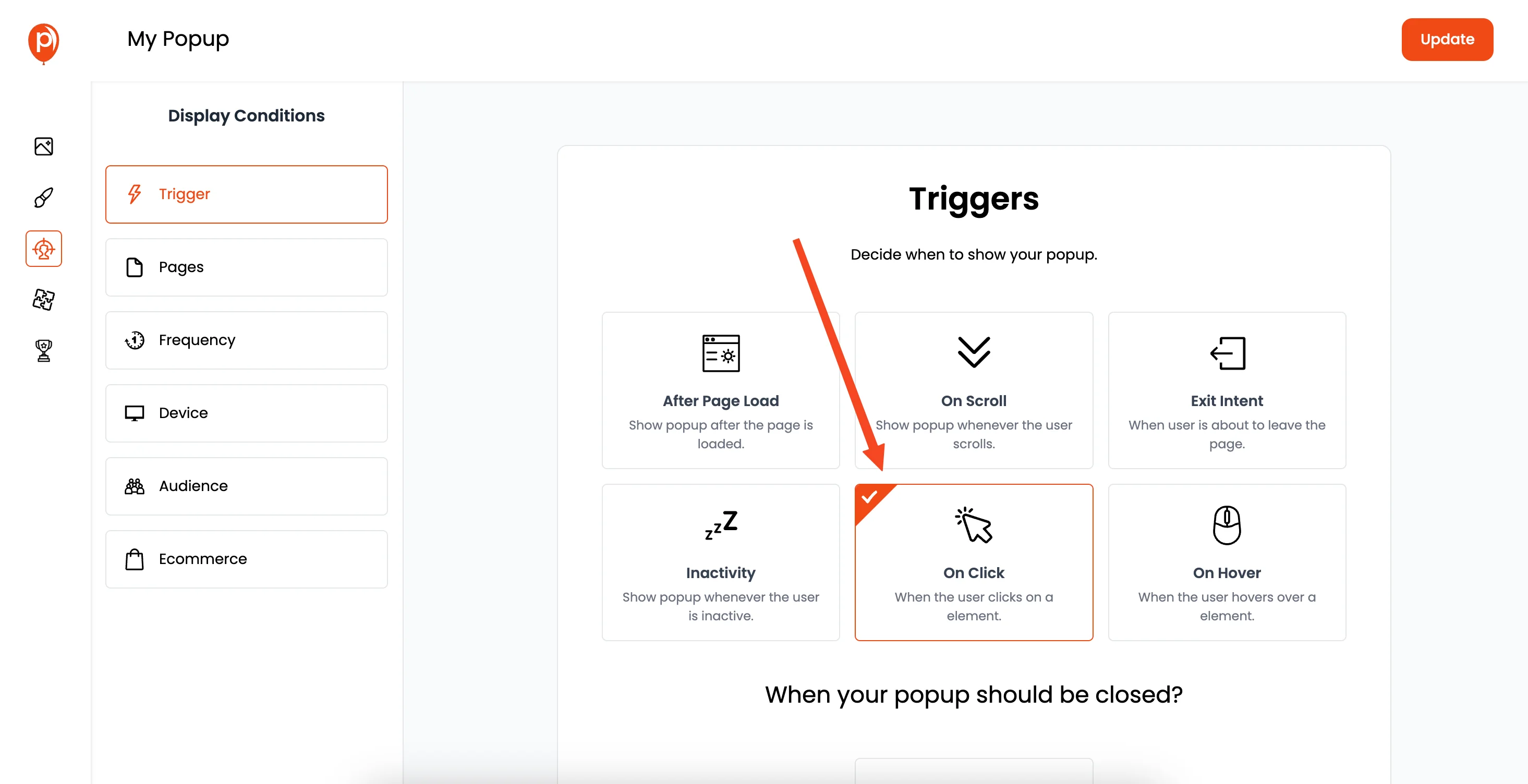
After you're happy with how the video looks in the editor, click "Next" or proceed to the "Display Conditions" or "Targeting" section. Here, you can decide when and where your embed appears.
You could have it show up as soon as a page loads, after a visitor scrolls a certain amount, or even when they're about to leave the page. You can also target specific pages or audience segments.
Step 12: Save and Publish Your Poper Embed
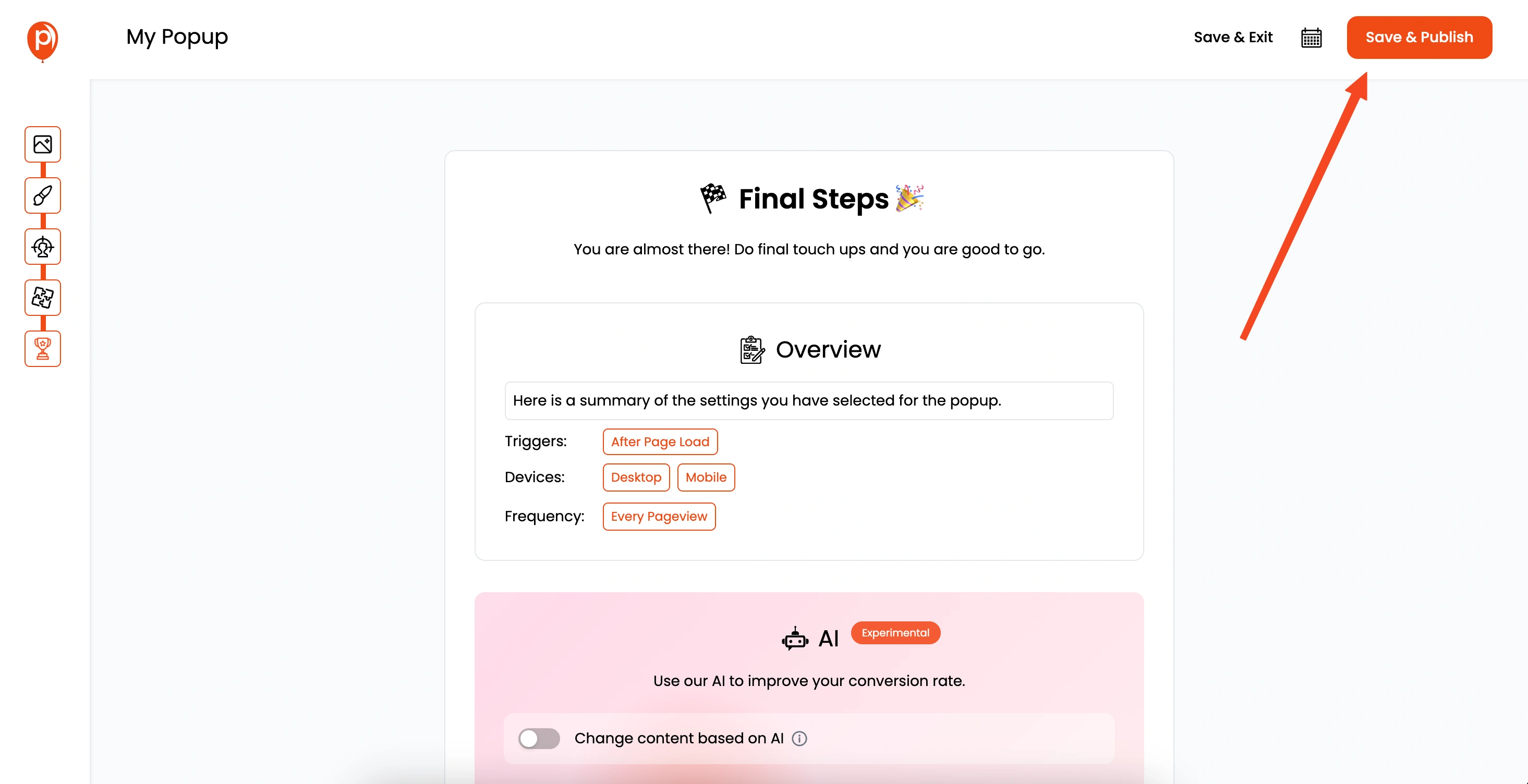
Once your display conditions are set, it's time to save your hard work and publish the embed. Look for a "Save & Publish" button.
This makes your Poper embed active and ready to be shown on your website.
Step 13: Install the Poper Code on Your Website
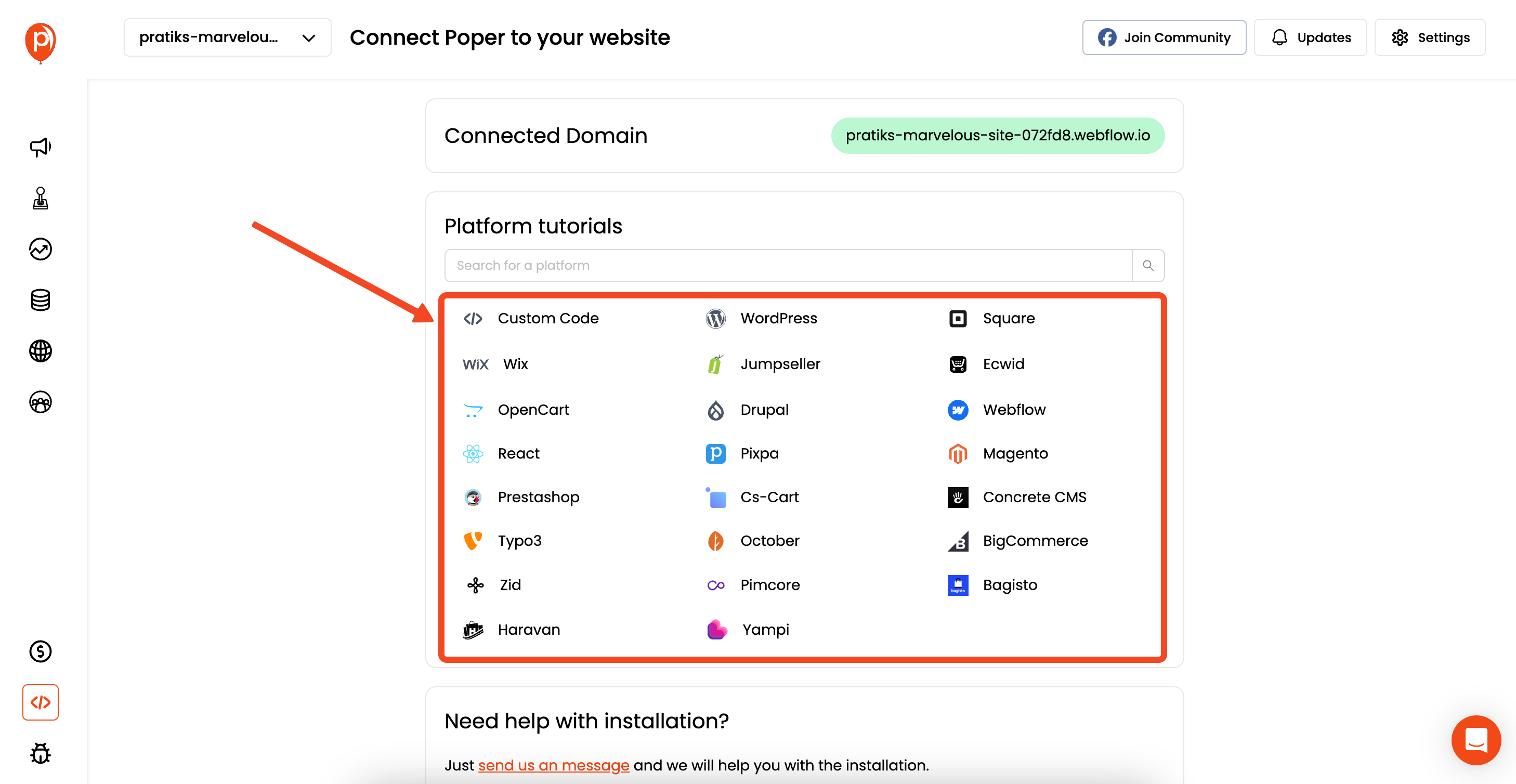
For Poper embeds to appear on your site, you need to have the main Poper script installed. If you haven't done this already, go to the "Code" section or "Installation" area in your Poper dashboard (usually found in the left navigation bar).
Select your website platform (e.g., HTML, WordPress) and follow the instructions to add the Poper snippet to your site. This is usually a one-time setup.
Step 14: Test Your Embedded Dropbox Video
Finally, go to your website and check out the page where you expect the Dropbox video embed to appear. Make sure it loads correctly, plays as expected, and looks good on different devices. Testing is crucial to ensure everything is working perfectly for your visitors.
And that's it! You've successfully embedded a Dropbox video into your website using Poper. I built Poper to make these kinds of integrations smooth, and I hope this guide helps you enhance your site with engaging video content. If you run into any questions, our support resources are always there to help!
Frequently Asked Questions (FAQ)
Is it free to embed Dropbox videos?
Yes, using Dropbox's share links and embedding them manually or with tools like Poper doesn't incur extra Dropbox fees beyond your storage plan. However, be mindful of Dropbox's bandwidth limitations for shared links.
Can I embed a password-protected Dropbox video?
No, the raw=1 method requires the link to be publicly accessible (anyone with the link). Password protection on Dropbox files typically directs users to the Dropbox interface for authentication.
Will the embedded Dropbox video be responsive?
If you set width="100%" on your <iframe> or <video> tag and use CSS like aspect-ratio, it will be responsive within its parent container. If using Poper, Poper's responsiveness settings for the element will also apply.
Can I customize the video player for an embedded Dropbox video?
When using the raw=1 link in an <iframe>, you generally get a very basic player, or the browser's default if it interprets the raw stream directly. You have limited customization options compared to dedicated video platforms. The HTML5 <video> tag gives you browser-default controls.
What happens if I move or delete the video file in Dropbox?
The embedded video will break, as the share link will no longer point to a valid file.

